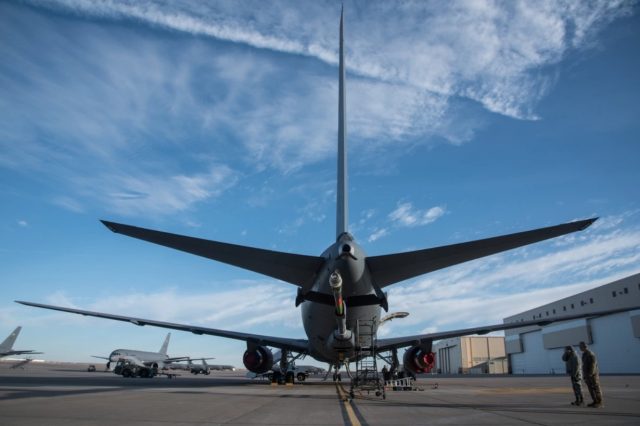
As the US Air Force prepares to accept a remote vision system fix from Boeing for the KC-46 Pegasus aerial refueler, a watchdog is warning the service it could repeat mistakes from the past.
Critical defects with the aircraft’s remote vision system and other technologies have delayed full use of its refueling capabilities.
The Air Force previously limited its financial risk by using a contract that set a price ceiling with Boeing. But the Air Force now plans to commit to the new design of the remote vision system before all of the technologies are adequately developed—risking further delays and increased costs.
The Government Accountability Office (GAO) noted the Air Force plans to close its review of the contractor’s proposed redesign for the remote vision system and assume financial responsibility for it without assessing the system’s technology readiness level, developing a plan to bring the system’s immature technologies to appropriate technology readiness levels, and integrating and testing the system prototype in an operational environment.
“Without taking these steps prior to closing the preliminary design review, the program may accept a remote vision system design that contains immature technologies and greater risk of cost and schedule growth,” GAO said.
The sooner the program completes these steps, even if after the design review, the sooner it can identify design issues and proactively take steps to mitigate any further cost growth and delays in delivering promised capability to the warfighter, the watchdog added.
The KC-46 tanker’s aerial refueling capability enables military aircraft to fly farther and stay airborne longer. The Air Force and Boeing are currently addressing several critical deficiencies—such shortfalls that can cause death or injury, or loss or damage to the aircraft—that are delaying use of KC-46’s full aerial refueling capabilities. Two of these deficiencies relate to the aircraft’s remote vision system (RVS). The system’s cameras and display allow operators to observe and reposition the boom—a rigid telescope that delivers fuel to the receiver aircraft. The RVS currently cannot be used to perform all aerial refueling missions because it does not work in changing lighting conditions.
As the Air Force begins to retire its aging tankers, it plans to expand the use of KC-46s while it works to address the remote vision system and other shortfalls. It is also studying the use of contracted air refueling services to add future capacity should there be shortages. The Air Force expects to complete that study in 2023.
The KC-46 tanker is among the Air Force’s highest acquisition priorities as it is intended to replace one-third of the aging aerial refueling tanker fleet. Aerial refueling—the transfer of fuel from airborne tankers to combat and airlift forces while in flight—is critical to the US military’s ability to operate globally.
The full GAO report is available here


























